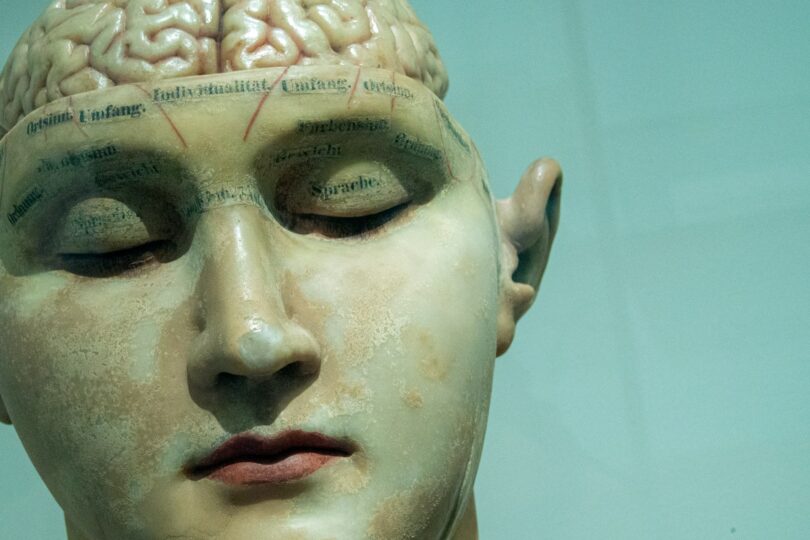Can You Upload Your Brain? The Strangest Futuristic Theories
In the realms of science fiction and speculative science, few questions are as provocative and philosophically tantalizing as: Can you upload your brain? The notion of digitizing consciousness and transcending the biological limitations of the human body invites wild theories, dystopian fears, and utopian dreams. But how close are we to such possibilities? What are the implications of a world where human minds can be copied, stored, or even edited like computer files?
This article explores the science, speculation, and strangest futuristic theories that surround the question of mind uploading, alongside other bizarre predictions about the future of humanity.
1. What Is Brain Uploading?
Brain uploading, also known as mind uploading, is the hypothetical process of scanning a person’s brain in such detail that a digital replica could be created, simulating the original mind’s functions, memories, and personality. The idea is to replicate not just the structure but the dynamic processes of the brain—everything from sensory perception to self-awareness.
In theory, once a brain is uploaded, it could be run on a computer or in a synthetic body, achieving a kind of digital immortality.
2. The Science Behind the Concept
To understand if mind uploading is even remotely possible, we must look at the human brain from a scientific perspective.
-
The human brain has approximately 86 billion neurons, each with thousands of synaptic connections.
-
Memories, emotions, thoughts, and identity arise from electrochemical interactions between these neurons.
-
Connectomics, the field that maps neural connections, is a critical foundation for brain uploading.
But even if we could map every neuron and synapse, would that be enough? The brain isn’t just hardware—it involves constantly changing biochemical states and feedback loops. Capturing this dynamic process would require not just a static map but an ongoing emulation of all brain activity.
3. Are We Anywhere Close?
Short answer: No—not yet. But progress is being made.
-
Brain-computer interfaces (BCIs) like Elon Musk’s Neuralink aim to bridge neural activity with digital systems, but they’re still rudimentary.
-
The Blue Brain Project and Human Brain Project are attempting to simulate aspects of the brain using supercomputers, with some success at modeling small clusters of neurons.
-
Scanning entire brains at the synaptic level (such as with connectome mapping) has been achieved in C. elegans (a tiny worm), but scaling that up to a human brain is orders of magnitude more complex.
Even if we had a map, we’d need an incredibly powerful computer—potentially beyond today’s exascale computing—to simulate the entire mind in real-time.
4. Philosophical Implications: Is It Still “You”?
Suppose one day we can scan your brain and create a digital copy. Who, then, is you?
-
Is the uploaded mind a true continuation of your consciousness?
-
Or is it a copy, sharing your memories but ultimately a different entity?
-
What if you remained alive after the upload—would there now be two versions of “you”?
This is known as the “continuity of consciousness” problem, central to debates on personal identity. Philosophers and cognitive scientists wrestle with this: does copying data equate to transferring subjective experience?
In essence, can “you” survive the process, or is it just a very good clone?
5. The Strangest Theories in the Realm of Mind Uploading
While mainstream science is still grappling with the basics, futurists and science fiction authors have proposed some truly wild possibilities. Here are some of the strangest and most fascinating:
A. Digital Heaven and Algorithmic Afterlife
Some theorists envision a future where uploaded minds can exist in virtual worlds—heavenly simulations with infinite pleasures, no pain, and endless possibilities. This concept echoes religious afterlife traditions but in digital form.
Companies and visionaries (like Ray Kurzweil) suggest that people might one day live forever in the cloud—a kind of algorithmic afterlife.
B. Resurrection Through Reconstruction
One theory suggests that if we collect enough data about a person—emails, voice recordings, photos, genetic info—we could reconstruct their personality and behavior posthumously. AI could fill in the gaps, creating a resurrected mind from scattered digital footprints.
This idea inspired fictional works like Black Mirror and real-life services like Replika, which simulate conversations based on personality data.
C. Quantum Consciousness Upload
Some fringe theories suggest that consciousness might be a quantum phenomenon, as theorized by physicists like Roger Penrose. If true, brain uploading would require simulating quantum states, something far beyond current computing.
This introduces a bizarre twist: maybe consciousness can’t be copied in classical terms at all—only entangled or transferred via quantum teleportation.
Read More: Time-Travel Through Truth: History’s Greatest Mysteries
6. Other Bizarre Futuristic Theories about Human Consciousness and Technology
Brain uploading is only one of many strange ideas about the future of the human mind. Here are some other mind-bending possibilities:
A. Hive Minds and Shared Consciousness
Imagine not an individual upload, but a networked consciousness—dozens, hundreds, or millions of minds joined into one vast intelligence. This is the idea of a hive mind, often explored in sci-fi as both utopian and terrifying.
Through neural implants or brain-to-brain interfaces, we might one day share thoughts directly—a kind of mental telepathy enabled by machines.
B. Backing Up and Editing the Mind
If our minds were digital files, could we back them up? Edit out traumatic memories? Restore to a previous state?
This would bring profound questions about morality, identity, and free will. Would memory edits change who we are? Could governments manipulate minds like we edit Word documents?
C. Digital Cloning and Multiplicity
If you can upload one copy of yourself, why not ten? Or a thousand?
Multiple versions of your mind could work on different tasks simultaneously—some living in simulations, others exploring the physical world via robots. The challenge would be syncing these experiences, or choosing which “you” is the original.
This idea also introduces ethical dilemmas about digital slavery—could corporations own or exploit copies of human minds?
7. Dangers and Ethical Quandaries
With every great leap comes great risk. The potential dangers of brain uploading and related technologies are immense.
-
Loss of individuality: In a world of copies and hive minds, what happens to the concept of a unique self?
-
Mind hacking: If your mind is code, it can be hacked. Imagine the horrors of brain viruses, psychological manipulation, or control over thoughts.
-
Inequality: Digital immortality may only be accessible to the ultra-rich, exacerbating existing social divides.
-
Consent and posthumous rights: If someone uploads a loved one from digital remains, does that being have rights? Could people be uploaded against their will?
Governments and ethicists must tread carefully as these technologies develop, balancing innovation with deep moral responsibility.
8. Religious and Cultural Responses
Religions around the world may interpret brain uploading in various ways:
-
Some might see it as blasphemous, an unnatural extension of life that denies divine judgment or the soul.
-
Others could interpret it as a continuation of the soul in a new form, especially in spiritual traditions that embrace reincarnation or multiple lifetimes.
-
Cultural traditions that emphasize the sanctity of the body may resist such radical alterations to human nature.
The clash between futuristic science and ancient beliefs could be one of the defining cultural battlegrounds of the 21st century.
9. What If It Works? A Glimpse Into the Far Future
Suppose we eventually develop the technology to upload minds seamlessly. What would society look like?
-
Death would be optional, and the definition of human would evolve.
-
Digital minds could explore hostile environments (deep space, deep oceans) without physical constraints.
-
Wars might be fought in cyberspace, not on battlefields.
-
Consciousness might be sent across light-years, while physical bodies stay behind.
Some thinkers suggest that our ultimate evolutionary path may be to abandon biology altogether, becoming entirely post-human—entities of pure thought and light, spreading through the universe in a kind of cosmic digital diaspora.
10. Final Thoughts:
Despite captivating stories and tantalizing possibilities, brain uploading remains speculative. The biological, computational, and philosophical hurdles are immense. Yet human history is filled with once-impossible ideas that became real—flight, space travel, organ transplants.
Whether mind uploading will join that list remains unknown. But the journey of exploring it forces us to ask profound questions:
-
What makes us human?
-
Can consciousness be copied?
-
Do we want to live forever, even if it means leaving our bodies behind?
As we look ahead, these strange futuristic theories may help us understand not just what we could become—but what we already are.




